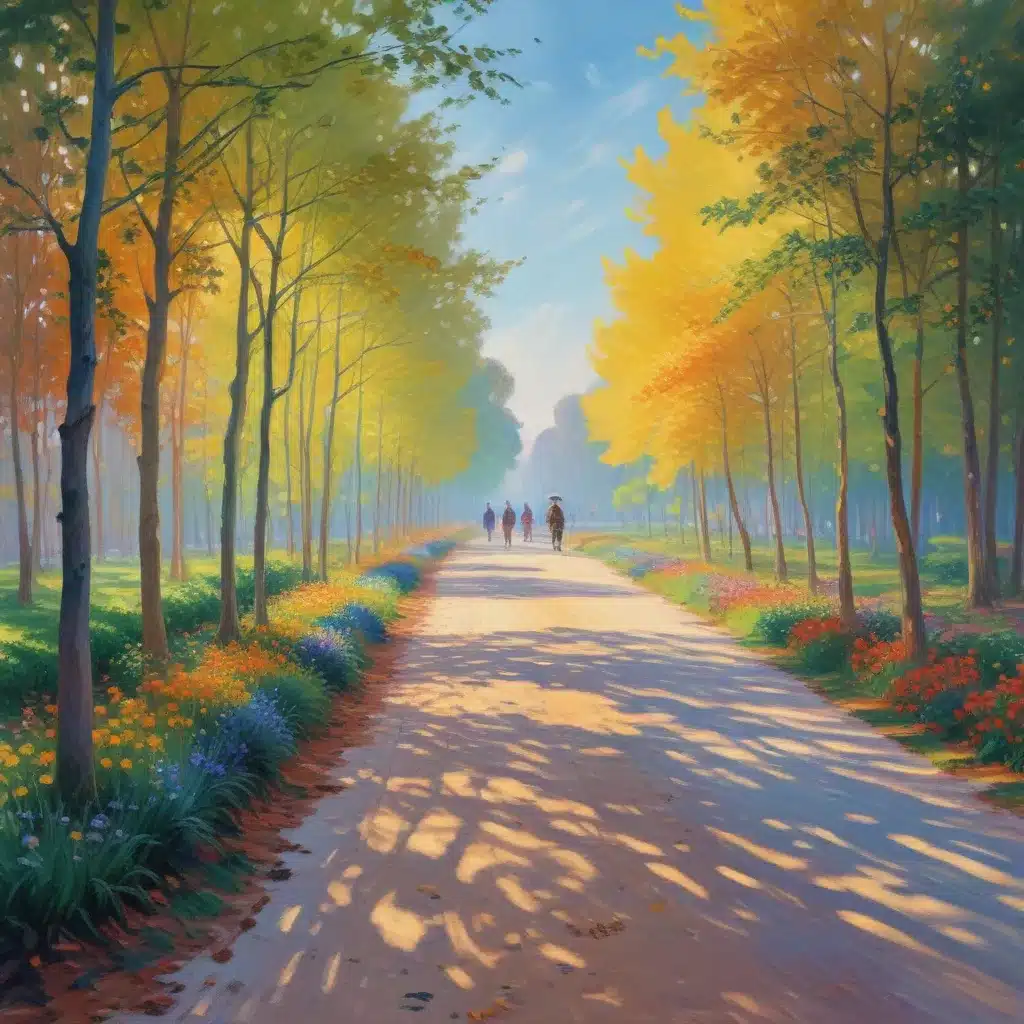
The Birth of a Revolution: Impressionism’s Groundbreaking Color Palette
In April 1874, a group of art revolutionaries known as the Anonymous Society of Painters presented their groundbreaking works at Studio Nadar in Paris. This historic exhibition featured iconic artists such as Monet, Cézanne, Pissarro, Renoir, Morisot, Degas, Sisley, Boudin, and Manet. Initially intended as an insult, the term “Impressionist” soon became synonymous with a revolutionary approach to art.
The Impressionists sought to break away from the traditional painting methods of the time, focusing on capturing the fleeting effects of light and color in the natural world. This distinctive approach to color, which would go on to influence generations of artists, was a hallmark of the Impressionist movement.
The Science of Impressionist Color
The Impressionist artists were not just painters; they were also keen observers of light and color, drawing inspiration from the scientific theories of their time. One of the key principles that guided their use of color was Chevreul’s law of simultaneous color contrast, which posits that colors appear more vibrant when placed next to their complementary hues.
This understanding of color theory allowed the Impressionists to create paintings with dazzling, luminous hues that seemed to leap off the canvas. The introduction of new, synthetic pigments in the 19th century further expanded their color palette, providing brighter, more stable, and more affordable options to experiment with.
Additionally, the Impressionists were influenced by the work of James Clerk Maxwell, who demonstrated that all visible colors could be created by mixing red, green, and blue light in varying proportions. This theory resonated with the Impressionists, who began to paint with pure, unmixed colors, placing small brushstrokes of different hues side by side so that they would blend in the viewer’s eye – a technique known as optical mixing.
“The Impressionists’ understanding of light and color was ahead of its time, their techniques innovative and impactful.”
Luminous Landscapes and Vibrant Vignettes: The Impressionist Color Palette in Action
The Impressionist color palette is characterized by its vibrant, luminous hues and radiant tones. Let’s explore how some of the movement’s most renowned artists utilized this distinctive approach to color:
Claude Monet: Known for his iconic “Water Lilies” series, Monet embraced the technique of “broken color,” applying strokes of pure, unmixed color side by side on the canvas to capture the shimmering effects of light and color on water.
Pierre-Auguste Renoir: Favoring a warm palette, Renoir skillfully captured the dynamic play of light on surfaces, using a technique known as “color temperature” to depict the warmth or coolness of colors in relation to light and shadow.
Edgar Degas: Although not strictly an Impressionist, Degas adopted and adapted many of the movement’s color techniques. He is particularly renowned for his use of pastels, exploiting their vibrant colors and innate luminosity to full effect in artworks like “Dancers in Blue.”
The Impressionists’ use of color was transformative, allowing them to capture the essence of a scene, the transient effects of light and color, in a way that was previously unseen. Their innovative techniques and scientific understanding of color paved the way for a new era in art.
Bridging the Past and the Present: Incorporating Impressionist Color in Contemporary Art
As you stand before a blank canvas, with the vibrant hues of the Impressionist masters imprinted in your mind, the possibilities for blending traditional and contemporary art are endless. Let’s explore how you can incorporate the Impressionist color palette into your own artistic practice:
Master the Basics: Familiarize yourself with the color wheel, complementary colors, and the nuances of hues, shades, and tints. Remember, the Impressionists often used pure, intense colors, allowing the “mixing” to happen in the viewer’s eye.
Capture the Light: Observe how light changes the perception of color throughout the day and across different seasons. Strive to infuse your artwork with the same sense of luminosity and atmosphere that defined the Impressionist movement.
Embrace Color Juxtaposition: Experiment with bold color combinations, using contrasting hues side-by-side to create a sense of vibrance and energy. Explore unconventional pairings that challenge the traditional boundaries of color in art.
“As you pick up your brush, remember that every stroke you make is a dialogue between the past and the present, a tribute to the Impressionists, and a testament to your own artistic journey.”
The Impressionist color palette is not just a relic of the past; it is a living, breathing language that can be interpreted, reshaped, and reinvented in the contemporary art world. By embracing the lessons of the Impressionists and infusing them with your own unique creative voice, you can forge a path that pays homage to the masters while forging new artistic frontiers.
Conclusion: Illuminating the Impressionist Palette, Igniting Your Creative Spark
The Impressionist color palette is a testament to the power of light, color, and artistic innovation. From the scientific principles that guided the movement to the luminous landscapes and vibrant vignettes that have captivated audiences for generations, this distinctive approach to art has left an indelible mark on the creative landscape.
As you continue your own artistic journey, remember the lessons of the Impressionists: Observe the world around you with a keen eye, experiment with bold colors and techniques, and never be afraid to challenge the boundaries of traditional art. By embracing the spirit of the Impressionist masters, you can unlock new artistic horizons and create works that inspire, captivate, and connect with audiences in profound and meaningful ways.
So, pick up your brush, dip it into the vibrant hues of the Impressionist palette, and let your creativity soar. The canvas is yours to transform, a canvas that echoes with the whispers of the past and the promise of a future where art and innovation know no bounds.